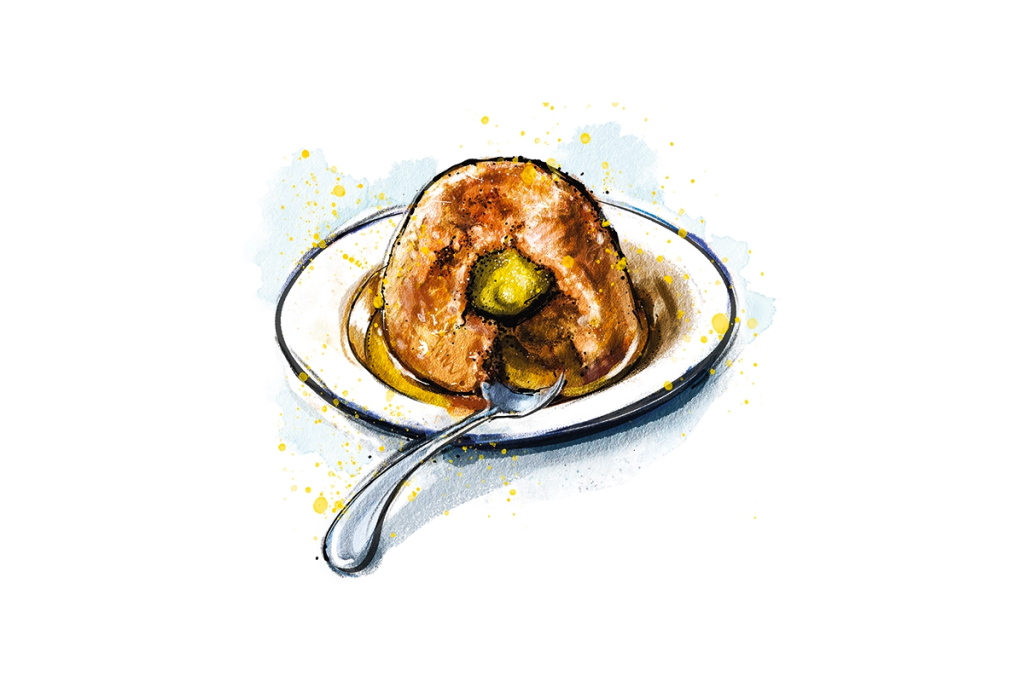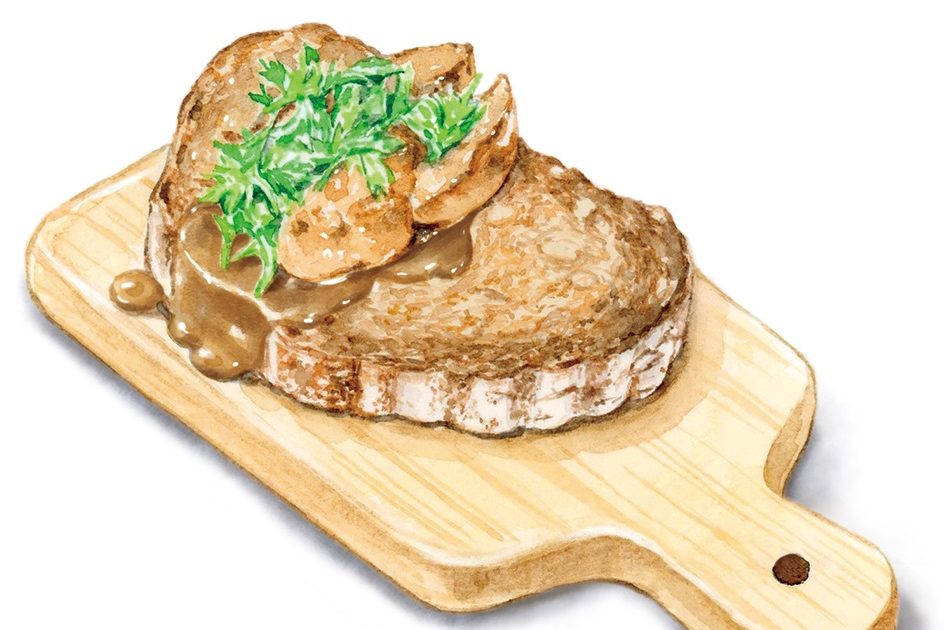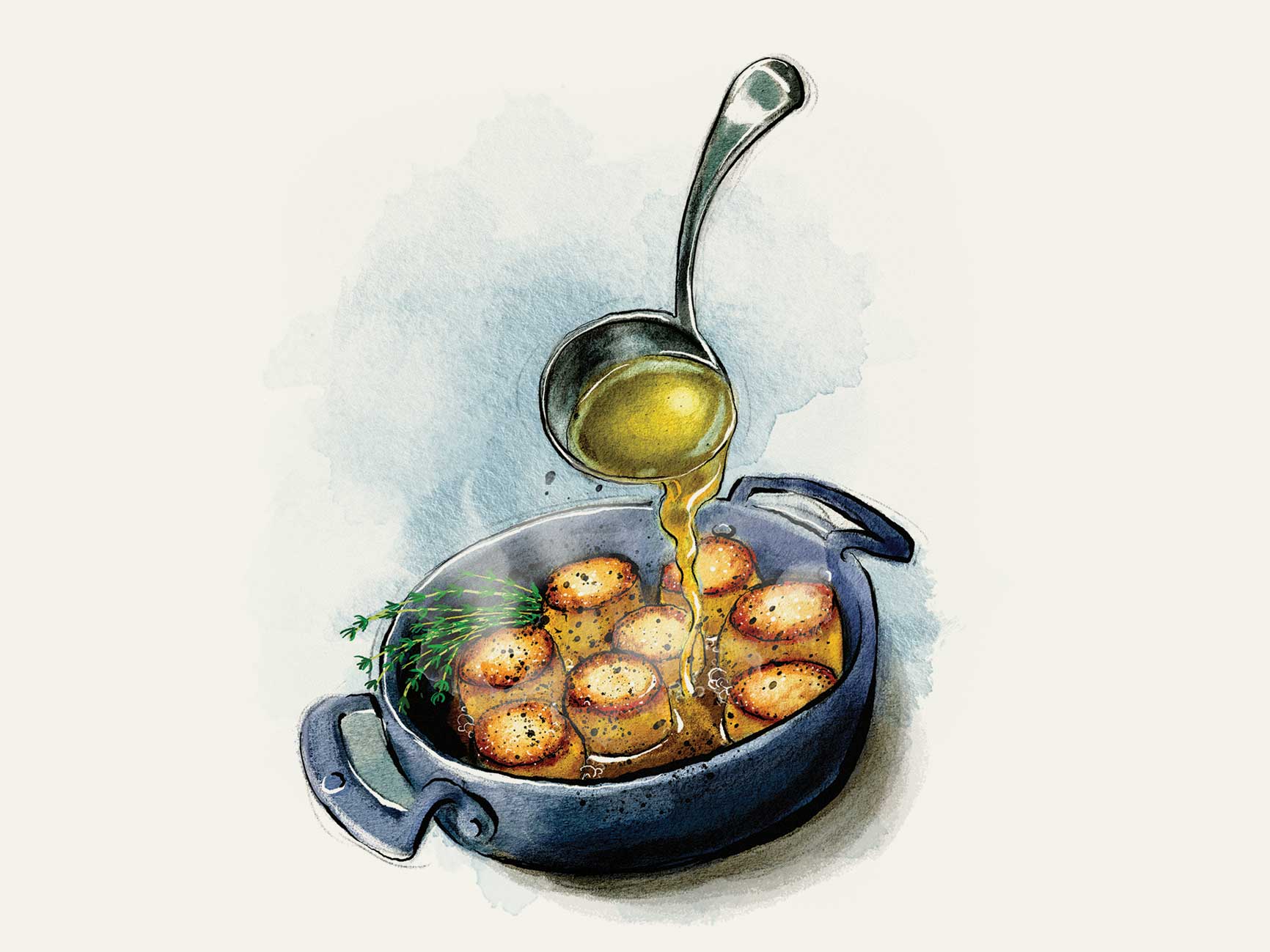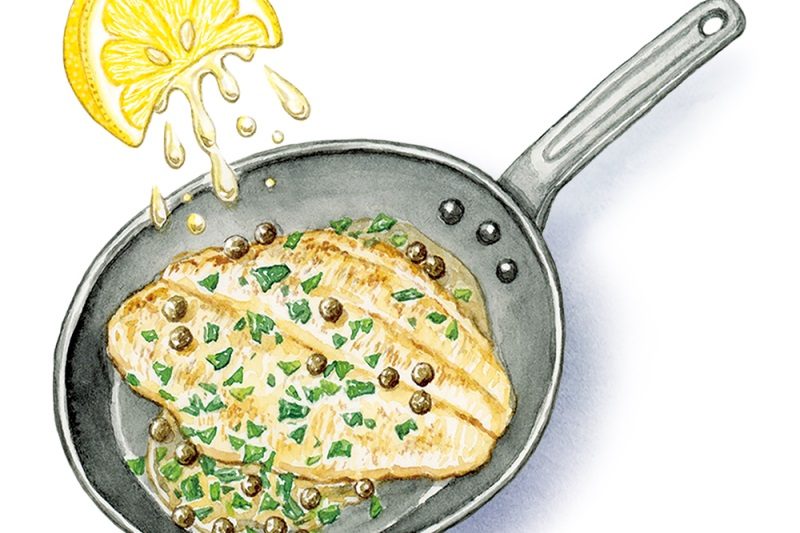I always feel pulled toward citrus at the start of the year. Initially it was subconscious: I’d just find myself in the kitchen making a lemon drizzle cake. But now I actively plan my citrusy January. As Christmas recedes, I make notes of recipes that I’m craving, and almost all of them call for a whack of lemon or grapefruit or orange.
It doesn’t take much analysis, does it? It’s a bit like having a dream about doing a test unprepared — what could it possibly mean?! The literal brightness of the fruit and the figurative brightness of the flavor — its zinginess — bring you back to life; it is the perfect ingredient for fresh starts, for leaves turned over.
Citrus has the added benefit of providing some contrast to the kind of puddings that you need at this time of year: soft, warm, comforting — the sort of thing unfairly labeled “stodge.” Even if it’s bound up with butter and sugar and served warm with a generous glug of cold cream, there’s something energizing about the citrus.
Sussex pond pudding is a sweet, steamed pudding that contains a whole lemon at its center. The whole fruit means that this is so much more than a lemony sauced pud. It is a masterclass in balancing flavors and textures: the sweet sauce is spiked by the citrus sharpness, offset by the unsweetened canvas of the suet pastry, crisp on the outside but soft on the inside.
The dish, unsurprisingly, comes from Sussex, and the pond refers to the sweet buttery sauce that pools around the pastry as soon as the pudding is cut. The lemon, bathed in butter and sugar as the pudding steams, cooks slowly until it can be eaten, zest, pith and all, as part of the pudding.
It wasn’t always so. The whole lemon, for which the dish has become known, is a relatively recent addition. Originally the pudding — which dates back to at least 1672 — was pastry wrapped around a “great piece of Butter.” This didn’t endear it to everyone: Thomas Turner, a shopkeeper and diarist living in Sussex in the eighteenth century, disparaged it as “butter pond pudding,” complaining that it contained too much.
To be fair to Turner, a casual glance at the recipe may elicit a raised eyebrow — that’s a lot of butter and sugar! — but thanks to the modern addition of lemon, the finished dish is a balanced one. The first version that definitely contained a lemon was Jane Grigson’s, published in 1974 in her book English Food. Grigson advocated for the lemon’s sharpness in what otherwise has the potential to be a slightly overwhelming dish, asserting that “versions of this pudding without the lemon are not worth bothering about.”
She’s right, of course. The lemon version is vastly superior to the butter-sugar recipe, to the point where the lemon has become its defining feature. When Hannah Woolley recorded that first version in 1672, she suggested filling the pastry with apple or gooseberries. And Heston Blumenthal’s famed alternative Christmas pudding with a hidden clementine in the middle is really just a riff on the Sussex pond. But while other versions have come and gone, it’s the lemon which has become the heart of the dish.
In the modern pudding, the lemon is pricked all over before it is placed in the pastry, to let the butter, sugar and citrus mingle. During the long, gentle cook, the lemon effectively confits in the butter and sugar, until it is so soft that it can be broken with the edge of a spoon — the thinner-skinned the lemon the better (and it is essential to opt for an unwaxed one). These elements create their own addictive sweet-sour lemon butter sauce, and the natural bitterness of the zest — tempered by the cooking, but still detectable — cuts through. As you turn the pudding out, it should just about hold its own weight, but as soon as you slice into it, it will collapse, spilling out its buttery sauce, and revealing its lemony surprise.
Serves 4
Takes 20 minutes
Cooks 3 hours 20 minutes
— 7 oz self-raising flour
— 3½ oz shredded suet
— ½ tsp fine salt
— 4¼ fl oz whole milk
— 3½ oz butter, cut in small dice
— 3½ oz caster sugar
— 1 unwaxed lemon
- Grease a 20 fl oz pudding basin with butter, and put a full kettle on to boil
- Whisk together the flour, suet and salt in a bowl. Add the milk and bring it together into a dough, first with a knife, then, as the mixture becomes more cohesive, with your hands
- Reserve a quarter of the pastry for the lid, and roll out the rest using a floured rolling pin to make a large circle. Ease this into the greased basin and smooth against the sides
- Toss the diced butter and sugar in a bowl, and place a layer in the bottom of the pastry-lined basin
- Prick the lemon all over with a sharp skewer. Place it in the basin and fill the rest of the cavity with the remaining butter and sugar mix. Roll the reserved pastry into a six-inch circle for the lid. Wet the edges of the pastry case with a little water, then place the lid on top, pressing gently to seal
- Place a piece of baking paper on top of a piece of tin foil, and fold both along the middle to create a pleat (this is to allow the pudding to expand). Place these two folded sheets over the top of the pudding basin, centering the pleat. Tie tightly with string
- To steam, place a clean tea towel in the base of a large saucepan. Fill the pan halfway with boiling water. Lower the pudding into the pan: the water should come about two-thirds of the way up the basin. Put the pan over a very low heat, cover with a lid, and steam for three hours. Check the water level sometimes: the pan must not boil dry, so top it up if needed
- To serve, lift the basin carefully from the pan of water, and remove the wrappings and string. Run a knife around the edge of the basin, being careful not to cut into the pastry. Place a lipped serving plate over the top of the pudding, and swiftly invert
This article was originally published in The Spectator’s UK magazine. Subscribe to the World edition here.

























